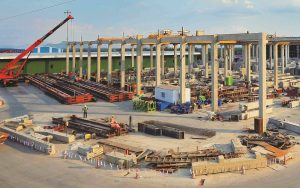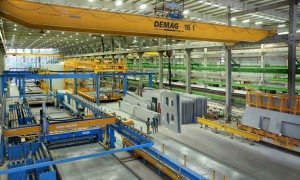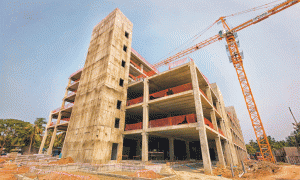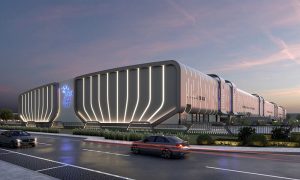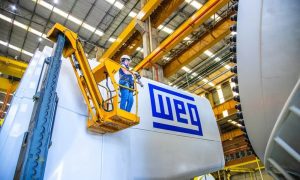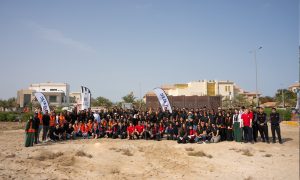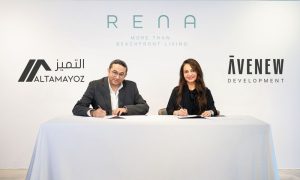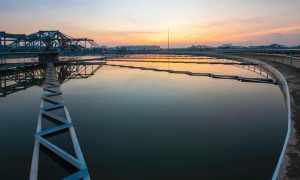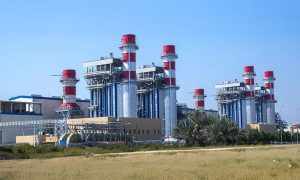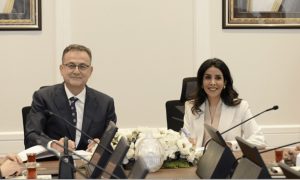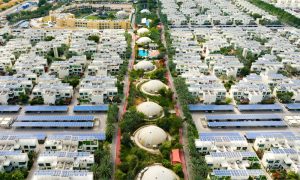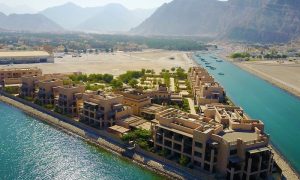KEF Katerra excited about disrupting Middle East construction
KEF Infra and Katerra on breaking new ground in the region’s industry
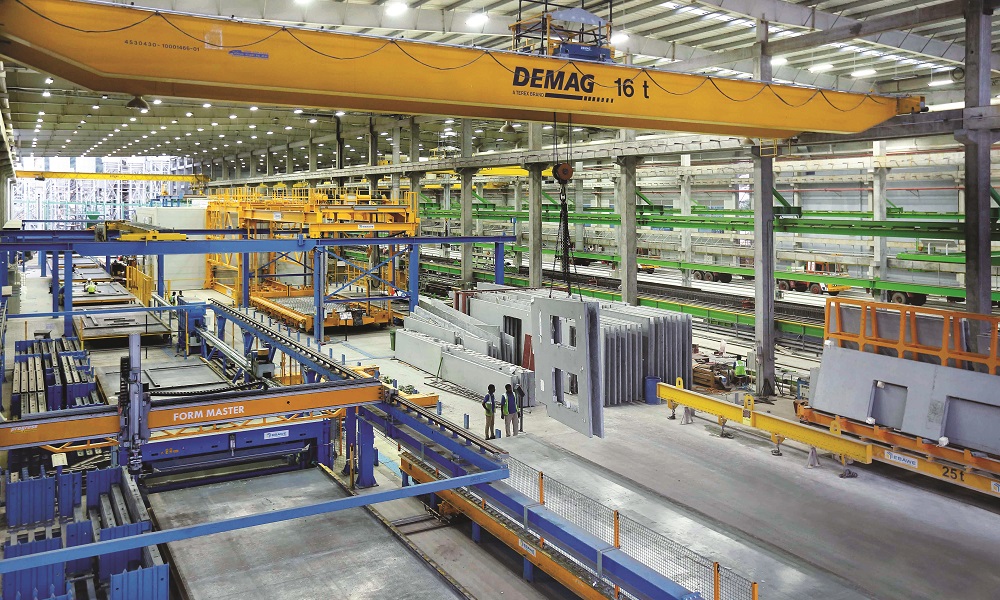
Technology and construction have always had a symbiotic relationship, with research and development in construction technology leading to increased productivity and performance on the work-site. From the invention of the crane in the sixth century BC to the use of computers to create BIM models many thousands of years later, it’s hard to argue against the fact that technology has been essential to the way that we build things.
However, over the last few years the global construction industry has become strangely resistant to adopting new ideas and concepts. It has been said that construction companies traditionally invest less than 1% of their revenue into new technologies – far lower than any other major industry. As a result, productivity has seen a steady decline, while costs continue to rise.
As a result of this moribundity in the industry, enterprising companies have been looking to take the next step in the technological revolution – moving construction off the site and onto the production line. These disrupters to the established order have created a groundswell of support for the use of automation and technology in the manufacturing, design and engineering processes.
Two such companies are Katerra, a US technology company focused on the design and construction industries; and KEF Infra, an off-site and manufacturing technology specialist based in Krishnagiri, Tamil Nadu, India.
Having established themselves as successful construction entities on opposite sides of the globe, developing and delivering several projects in their local markets, the companies announced a merger on June 21. This new entity, known as KEF-Katerra, has a significantly expanded geographic reach, manufacturing capacity and market expertise, with more than $3.7bn in bookings across North America and India alone.
As it now looks to expand into the Middle East market, Faizal Kottikollon, founder and chairman of KEF Infra, and Ash Bhardwaj, Sales, Program Management and Software Development leader at Katerra, sat down with Big Project ME and MECN for a chat about the impact of the merger and how the new entity will operate.
“I am very excited by the prospects of this strategic alliance,” says Kottikollon. “We look forward to breaking new ground with a like-minded team, particularly in the Middle East because government support has led to burgeoning investment opportunities, making this region a potential growth market for KEF Katerra. We will also expand our footprint to other geographies in India, beyond our current markets.”
With both companies employing a vertically integrated model, offering end-to-end services enhanced by design, technology and off-site manufacturing, Kottikollon and Bhardwaj insist there are tremendous synergies between the two firms that will allow them to offer every possible option to their customers in different countries.
“The combined company has got 85 or 86 projects on the ground right now. We’re designing, as we speak, 200 projects and we’re breaking ground on – on average – two projects a week, and one of the things that is happening is that both companies are hitting a growth curve in a really good way,” enthuses Bhardwaj.
“From Katerra’s perspective, one of the things we’re excited about is having access to the Indian market and being able to have the ability to expand into the Middle East with the technology that KEF Infra has and what it has developed over there. India is a huge market, it’s a growing market, so we plan to look at India in a holistic way, and I expect to have pan-India coverage to serve clients in different regions.
“At the same time, we’ll be able to take some of KEF’s technology on precast – the facility in India has some of the best in the world – to the US. We’re laying down plans for all this, and it’ll be announced as we move forward.”
Kottikollon adds that the vertical integration of all disciplines, from architectural design, structural design and engineering to MEP and finishes, as well as the overall project planning and execution, will allow integrated project delivery, which is something he feels is lacking in construction today. In addition to addressing housing needs in its target markets, he says KEF-Katerra will be actively engaged in building critical infrastructure, such as hospitals and schools.
“I don’t think there’s any other company in the world that’s offering what we are. The combined strength that we have will be a huge game changer for the entire construction world,” he asserts. “Now, we can cover the entire construction sector. We’re already building the biggest shopping mall in India. We can also offer commercial buildings, residential, hospitals, hotels – our technology is a perfect fit for prefabricated hotels. There’s nothing stopping us.”
Founded in 2014 by Dubai holding company KEF Holdings, KEF Infra uses robotics and automation in its manufacturing operations to deliver high-quality building projects quickly and efficiently. It currently has 1,400 employees and factories in its facilities in Krishnagiri, Tamil Nadu and Lucknow, Uttar Pradesh, and Kottikollon says the merger will allow KEF-Katerra to bring world-class precast concrete technologies to the US market, greatly expanding the design and materials options available to Katerra’s clientele. At the same time, the move will strengthen the global supply chain and enhance manufacturing processes in existing KEF markets.
“The demand for what we do is extremely high, both in the North American and Indian markets. Those are the markets we’re focused on at this point in time,” says Ash Bhardwaj. “So far, Katerra has been serving, in the US, the multi-family asset class. What we’ve been doing is prioritising the design phases on six or seven other categories as well. The know-how that KEF can bring to the table, especially in the area of hospitals and malls, will be taken to the US markets. That will be a complete market segment that Katerra will now be able to address.
“From an Indian standpoint, it’s more that we’ll have enough capital to be able to rapidly expand into different areas that have previously not been served. I look upon this as an opportunity to expand the geographical footprint, and to leverage people and technologies.”
Katerra currently employs more than 2,000 people, with operational factories across the US and in Shanghai, China. Once the merger is complete in Q3 2018, the newly formed entity will have more than 3,400 employees, with a global footprint of 20 locations in the US, China, India, Mexico and the Middle East.
While the duo is reluctant to disclose the financial specifics of the deal, pointing out that both companies are privately owned firms, Bhardwaj says the investment from Katerra has been significant. He adds that Faizal Kottikollon will become a significant shareholder in Katerra and that in addition to the combined bookings being $3.7bn for the year, the combined pipeline for both companies is close to $8bn and the expected revenue for this year is in excess of $1bn and heading towards $3.5-4bn next year.
However, Bhardwaj is keen to stress that the expanded footprint and operations will allow both companies to share their expertise and knowledge, letting them grow and evolve together.
“The way to look at this is that there are three pieces to the puzzle – one piece is the design part, the design and engineering. Katerra has almost 300 architectural design experts in-house, and similar amounts in engineering. That’s a very strong area that Katerra has got.
“The second piece is the manufacturing – KEF has got a very strong manufacturing facility in Krishnagiri, and Katerra has got plants in the US and China. Good practice will start within those plants and facilities, so as to put together a common way of operating and coordinating.
“Finally, the third piece is on the field, where the actual construction takes place. We’re very impressed by what KEF brings to the table with that – the disciplined approach that they have. It’s an opportunity for us to learn from that and implement in the US markets as well.
“It’s great that the strengths of each company are going to be used to make each other stronger,” he asserts in conclusion.

